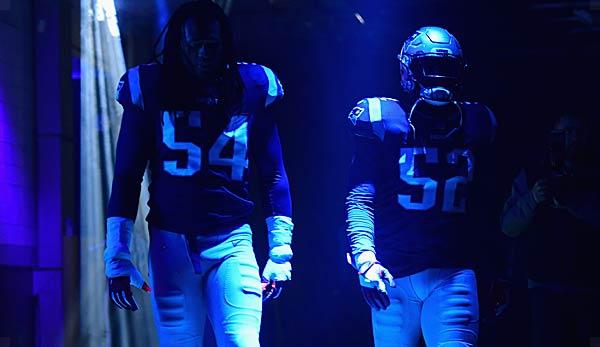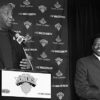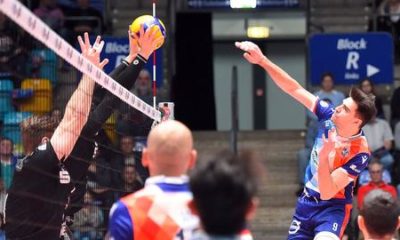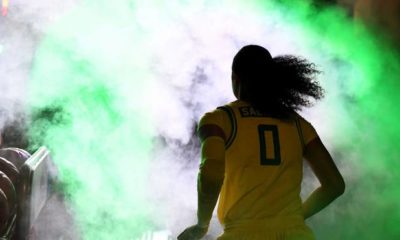US-Sport
NFL: Column: The new Pats-Defense – and who gets into the playoffs?
Are the Carolina Panthers saying goodbye to the playoff race after all? And who will grab the last wildcard ticket in the AFC? In his weekly column, SPOX editor Adrian Franke delivers his assessments of the playoff race, explains the strong defensive performance of the New England Patriots, and looks at Offense developments and possible Contender
You want to ask questions to the SPOX-NFL column? This goes right here to the author!
The biggest headline on Sunday was provided by the Green Bay Packers, who parted company with coach Mike McCarthy after the surprising home defeat against Arizona.
A first classification of the events, and some aspects, which are important for the Packers in their search for a new Head Coach, are described in more detail here.
The Patriots have seen this trend several times in recent years: the whole team found their rhythm during the season and needed a few weeks to get started; and while the offensive was often done by individual players, the Defense as a whole needed this time to find itself and develop a clear identity.
I’ve been writing for a few weeks now that you don’t have to worry about this Patriots team, and defense is a key reason. This was once again visible against the Vikings, and New England’s defense works differently than most strong defenses in the NFL.
Whether Chicago, the Chargers, the Cowboys or the Broncos: high individual quality in the Pass-Rush and therefore the possibility to print from the 4-Men-Rush – this is the basis for many. Also teams like the Chiefs and the Rams, who are vulnerable in other parts of their defense, have their strengths in pass-rush and are therefore dangerous and able to force big plays.
In a way, this is also the central topic when we are talking about defenses at the moment. There are no constant dominant defenses this year, it’s all about pushing Big Plays – for which the pass-rush is usually the best base.
New England is different here, and the game against the Vikings was a very good illustration of how this defense works.
The sack at the beginning of the final quarter shows a way how ew England can present a front and pass protection with problems.
The Patriots play Man Coverage and show seven players directly at the Line of Scrimmage before the Snap. So the quarterback sees the man coverage and has to reckon with a 6-man flash (possibly seven flashes if the running back remains in pass protection).
In the end, five players come, combined with a means that the Patriots only like to use: Stunts and all variations of them; meaning a defender who moves to the side after the snap and attacks another gap than he had indicated before the snap, navigating around the “Penetrator” who attacks his gap directly in front of him.
This “looper”, the player who first moves horizontally and then attacks, is also the player who finally catches cousins.
This is how the first bag of the game came about, although everything is different apart from the inwardly “looping” defensive lineman.
The Patriots play an Underneath Zone Coverage and bring no lightning, but four Rushers. But the pre-snap line-up again shows seven men in the box, with no clear allocation before the snap.
The Vikings have to adjust their blocking scheme accordingly after the snap, and so in the end not only one blocker remains unemployed, but one of the two defensive tackles finally gets through due to the post-snap changed Rush.
New England also achieves a similar result with these formations, which one also knows from the Vikings: The hint of pressure and a flash over the middle, only to let one or more of the supposed speed cameras fall back into Underneath zones.
These formations and variations of them can be seen more and more often by the Patriots. Whether against the Packers or also against the Chiefs – sometimes combined with a quarterback spy – New England is very varied here.
And the Patriots sometimes push this to the extreme, as the first third down of the Vikings in this game reveals and as you could observe several times during the game very well:
New England shows a front with only one Down-Lineman, three Linebackers and seven (!) Defensive Backs. The Patriots have been a team for several years that plays with the most 3-Safety packages and attaches importance to more flexibility also on the second level of defense.
Above all the Pats show here the Offense complete chaos. Apart from the two one-on-one matchups on the outside, the Offense can hardly draw any conclusions about the possible defense plan. What sometimes looks like chaos, because the Patriots defenders in the box seem to change their positions wildly before the snap, is part of the play and should make all pre-snap reads even more difficult.
Dick LeBeau already played his version of the 1-5-5-Defense more than ten years ago in Pittsburgh; back then, as the name suggests, with five linebackers and five defensive backs, but also only one down-line man on the line of scrimmage.
Replacing two more linebackers with defensive backs, as observed with the Patriots against Minnesota, corresponds to the trend of the (pass-heavy) time in the NFL. However, the general approach fits into the overall picture that New England’s Defense has been hinting at for some time: while too many Defenses still act far too statically and seem to have no answers to the mobile, flexible Offenses, the Patriots are increasingly an exception.
This also applies to the Rush and Blitz approach. New England plays a lot of man coverage and is more flexible in the front anyway, based on this, the Pats have already experimented several times this season with Blitz packages, which you could observe in college several times this year with some teams; Blitz packages, which can provide answers to the Empty Formations and Short Pass Openings.
This is a theoretical 6-man flash, whereby in the most extreme case after the snap only the players who have not directly assigned a blocker really rushen. The others let themselves fall back into the Underneath Coverage and thus provide the short pass routes.
So you waste fewer players in these packages on a pass rush that won’t get through and instead are able to deliver more pass paths while still remaining efficient in the pass rush.
This also leads to effective pressure packages without blitzing. Cousins was under pressure at 13 dropbacks, only passing eight passes for an average of 4.5 yards per pass – and could only throw a single pass that brought in a new first down. Minnesota failed to complete over 20 yards or more (0/6, 2 INT).
The Patriots are a blitzing defense, and they have intensified that over the season. New England is in the top 8 in terms of lightning percentage, with an average lightning rate of around 30 percent – after the Patriots didn’t even break the 19 percent in three of their first five games here.
Only against Jacksonville were the Patriots above average in their first six games of the season, Blake Bortles was flashed in 45 percent of his snaps. Since then it has been much more aggressive.
Numbers according to Pro Football Focus.
The greater readiness for blitzing has made New England’s defense even more difficult to calculate. The Patriots regularly suggest 6-, 7-man flashes and then bring only three players, and vice versa – and when you look at the tapes of the Pats Defense, it’s hard to see any tendencies.
New England, that must not remain unmentioned, also has the Secondary to play like this. Bill Belichick has been investing defensively money in cornerbacks and safetys for many years now rather than in passport pushers. The front is supposed to consist of disciplined gap-controlling players to stop the run – and the qualities against the pass in the front come more via design than via individual quality.
But that doesn’t make New England any less dangerous with regard to the playoffs, perhaps even the opposite. When it comes to the strong offenses of the Chiefs, Steelers, Chargers or Texans, the Patriots Pass Defense cannot be cracked by taking one or two Pass Rushers out of play.
Moreover, and this is the overriding takeaway when you look at New England’s Defense: to appear with disciplined complexity as well as dynamics in designs, formations and pre-snap behaviour and above all to find new ways in pass-rush is currently the most promising approach so that Defensive Coordinator Offenses can make life a little harder again. This is a component that has been neglected in the NFL this year.
Page 1: New England’s Defense – and answers to the new Offenses
Page 2: Playoff races: Who’s coming into the postseason?
Page 3: DAL and HOU Contender, Offenses of the Future, Rodgers – your questions


















You must be logged in to post a comment Login